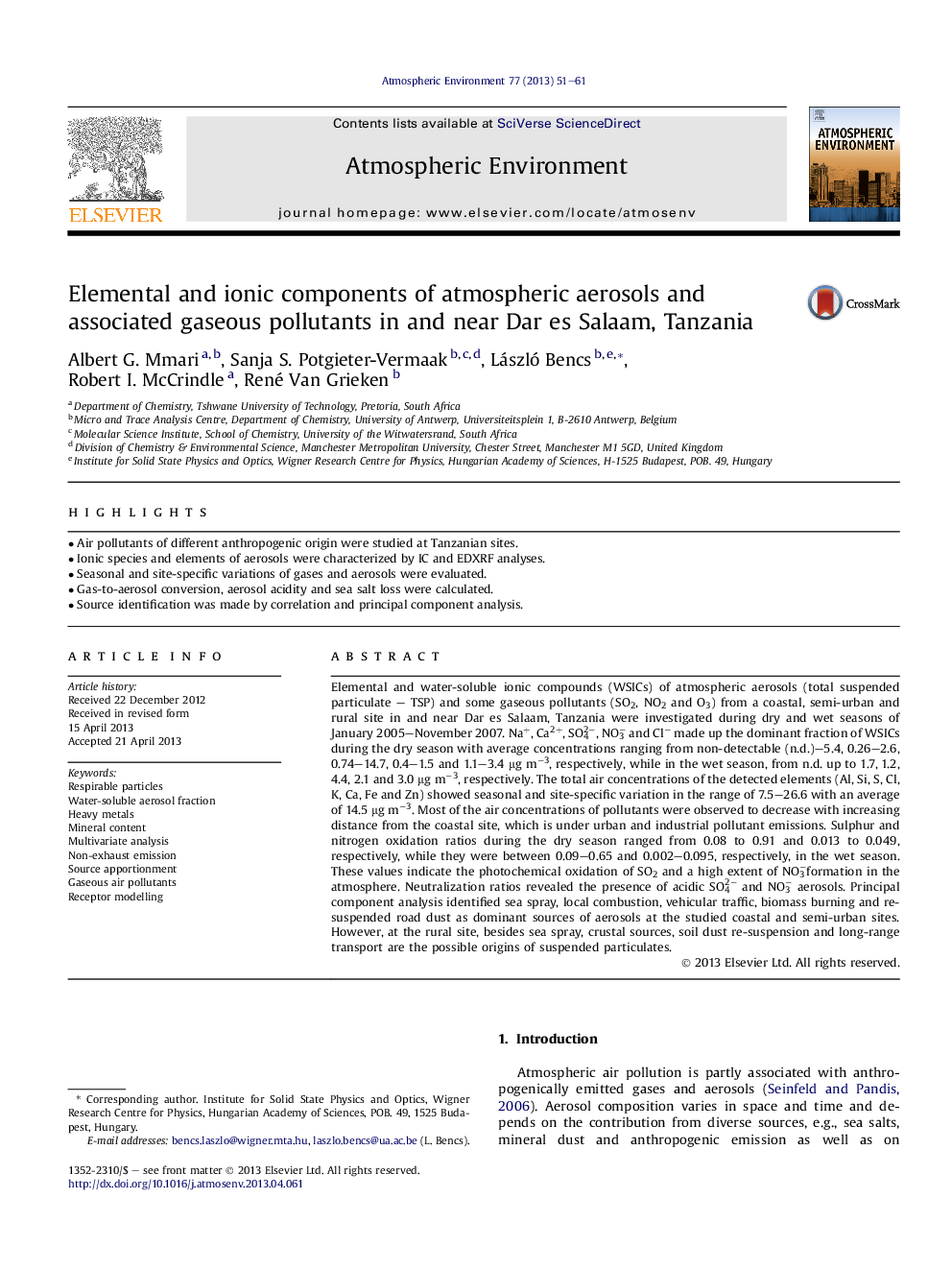| کد مقاله | کد نشریه | سال انتشار | مقاله انگلیسی | نسخه تمام متن |
|---|---|---|---|---|
| 6341158 | 1620394 | 2013 | 11 صفحه PDF | دانلود رایگان |
- Air pollutants of different anthropogenic origin were studied at Tanzanian sites.
- Ionic species and elements of aerosols were characterized by IC and EDXRF analyses.
- Seasonal and site-specific variations of gases and aerosols were evaluated.
- Gas-to-aerosol conversion, aerosol acidity and sea salt loss were calculated.
- Source identification was made by correlation and principal component analysis.
Elemental and water-soluble ionic compounds (WSICs) of atmospheric aerosols (total suspended particulate - TSP) and some gaseous pollutants (SO2, NO2 and O3) from a coastal, semi-urban and rural site in and near Dar es Salaam, Tanzania were investigated during dry and wet seasons of January 2005-November 2007. Na+, Ca2+, SO42â, NO3â and Clâ made up the dominant fraction of WSICs during the dry season with average concentrations ranging from non-detectable (n.d.)-5.4, 0.26-2.6, 0.74-14.7, 0.4-1.5 and 1.1-3.4 μg mâ3, respectively, while in the wet season, from n.d. up to 1.7, 1.2, 4.4, 2.1 and 3.0 μg mâ3, respectively. The total air concentrations of the detected elements (Al, Si, S, Cl, K, Ca, Fe and Zn) showed seasonal and site-specific variation in the range of 7.5-26.6 with an average of 14.5 μg mâ3. Most of the air concentrations of pollutants were observed to decrease with increasing distance from the coastal site, which is under urban and industrial pollutant emissions. Sulphur and nitrogen oxidation ratios during the dry season ranged from 0.08 to 0.91 and 0.013 to 0.049, respectively, while they were between 0.09-0.65 and 0.002-0.095, respectively, in the wet season. These values indicate the photochemical oxidation of SO2 and a high extent of NO3âformation in the atmosphere. Neutralization ratios revealed the presence of acidic SO42â and NO3â aerosols. Principal component analysis identified sea spray, local combustion, vehicular traffic, biomass burning and re-suspended road dust as dominant sources of aerosols at the studied coastal and semi-urban sites. However, at the rural site, besides sea spray, crustal sources, soil dust re-suspension and long-range transport are the possible origins of suspended particulates.
Journal: Atmospheric Environment - Volume 77, October 2013, Pages 51-61
